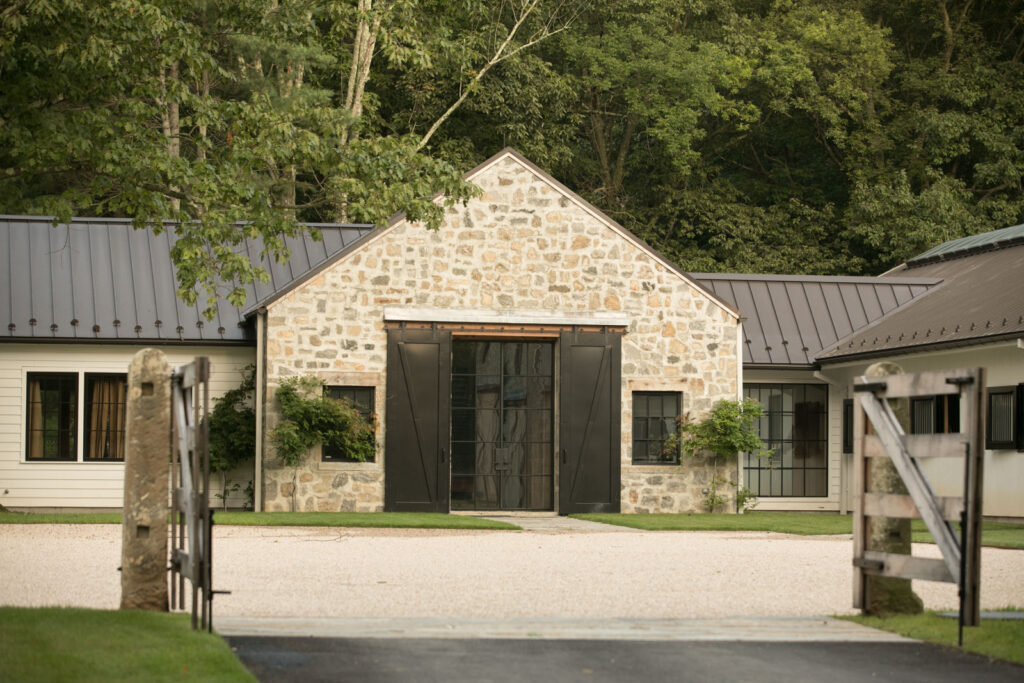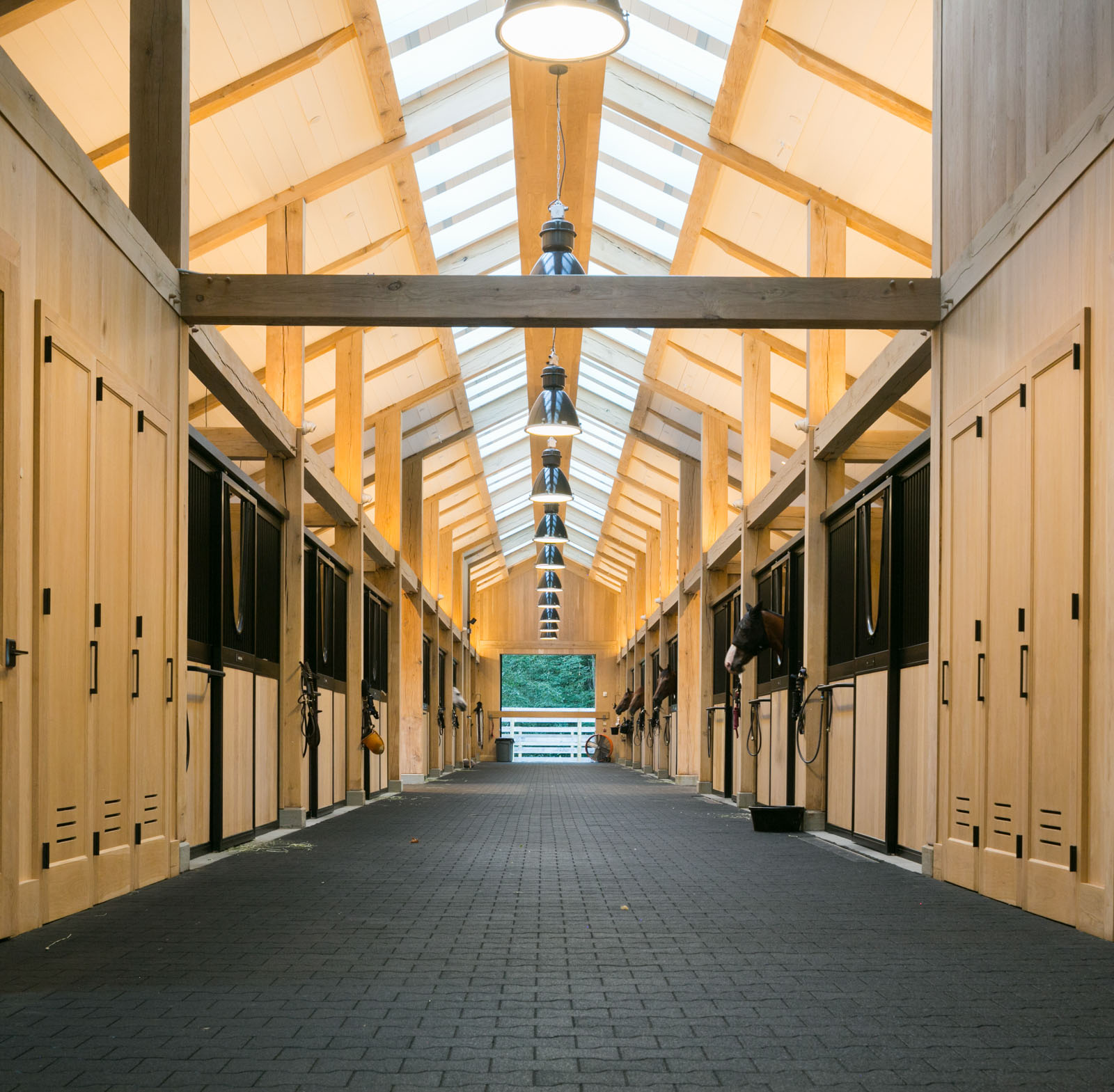
Starlight Farms, in Greenwich, Connecticut.
Photos by: LANDINO PHOTO
A recent trend in barn construction, which can only be described as transformative, combines the strengths of heavy timber framing and cross laminated timber (CLT) framing. This hybrid approach is more than just an advancement in design and construction; it’s potentially a game changer for the equestrian world.
Heavy timber framing, revered for its robustness and warm aesthetic, has remained fundamental to barn construction for centuries. CLT, a newer material, offers significant strength and versatility, especially for long horizontal spans. This panelized, structural engineered wood product can be used in all major building components, including floors, interior and exterior walls, and roofs. CLT is made of three or more layers of lumber, with knots and checks removed and with each layer oriented perpendicularly to the adjacent layer. The layers are then pressed together with adhesive. The combination of these materials lets architects and builders tackle unique challenges in larger equestrian barn designs, including accommodating numerous stalls, hosting public events, and meeting the needs of trainers and staff.
B&D Builders, a design-build company known for quality constructed barns and equestrian facilities, has witnessed numerous design trends over its 20 years. A project in Greenwich, Connecticut, which entailed an 8,500-square-foot equestrian facility and housed 19 custom stalls and other amenities, exemplifies the effectiveness of the hybrid method. The collaboration between Murphy Brothers Contracting (Mamaroneck, NY), architectural firm Jones Byrne Margeotes Partners of Stamford, CT, and B&D Builders, Starlight Farms is a facility that melds functionality with elegance.
“The primary advantage to this hybrid approach is its efficiency in construction timelines,” says Daniel Glick, co-founder and co-owner of B&D Builders. “During the Greenwich project, while building approval and site work was ongoing, B&D craftsmen simultaneously fabricated frame components off-site, considerably reducing the overall timeline.”


Starlight Farms, in Greenwich, Connecticut.
Photos by: LANDINO PHOTO
The construction speed of these barns, utilizing pre-cut timber and CLT components, is unmatched. This ready-to-install framing method significantly reduces construction time compared to traditional on-site framing, as evidenced in the Greenwich project, where weeks were shaved off the construction timeline.
CLT’s aesthetic and functional qualities were notable in this project. The CLT components delivered a finished, modern look to the barn’s ceiling, complementing the heavy timber frame joints and supports while also providing sound-dampening properties. This significantly reduced noise from rainfall on the roof, contributing to a tranquil environment
for horses and reducing arena noise overall. Despite record-breaking rainfall, the Greenwich project was completed in just over a year, a testament to the efficiency of pre-fabricating components alongside site preparation and permitting.



Heavy timber framing, revered for its robustness and warm aesthetic, has remained fundamental to barn construction for centuries. Cross-laminated timber (CLT) is made of three or more layers of lumber, with knots and checks removed and with each layer oriented perpendicularly to the adjacent layer. The layers are then pressed together with adhesive. Photos by: LANDINO PHOTO
This hybrid building approach also aligns with green building principles, as timber harvested from responsibly sourced wood is a sustainable material. Its production also creates fewer carbon emissions compared to steel or concrete. Rather than emitting CO2, trees absorb it from the atmosphere. The Woodworks Carbon Calculator for Wood Buildings estimates that a 2,500-square-foot building stores 40 metric tons (mt) of CO2. That means a 32,000-square foot wood office building can store 300 mt of CO2, and the wood in a 5,000-square-foot residence stores 38 mt of CO2.
The hybrid timber-CLT framing approach represents a significant advancement in equestrian facility construction, one that B&D anticipates using more of in the future. Using this hybrid model, B&D is designing multiple barns for an equestrian campus in Michigan. “It’s not just about building barns; it’s about creating environments that are impressive, comfortable, and enjoyable for both horses and humans, all while respecting our ecological responsibilities,” says Glick. As timber frame companies continue to innovate, the future of equestrian facility construction looks brighter and more sustainable than ever.
To read this article in the digital issue of EQ Living, click here. To read more of EQ Living’s technology features click here.

